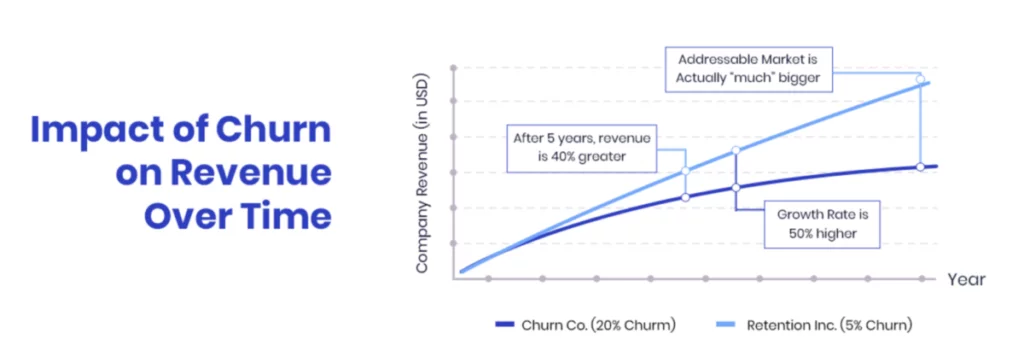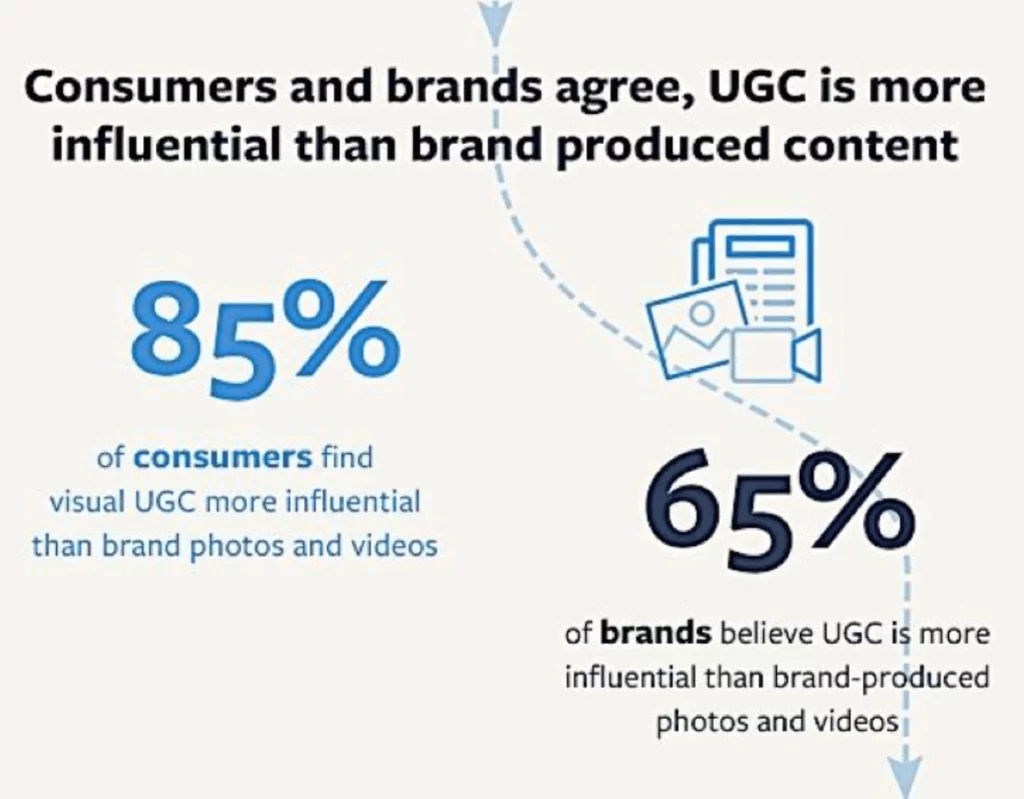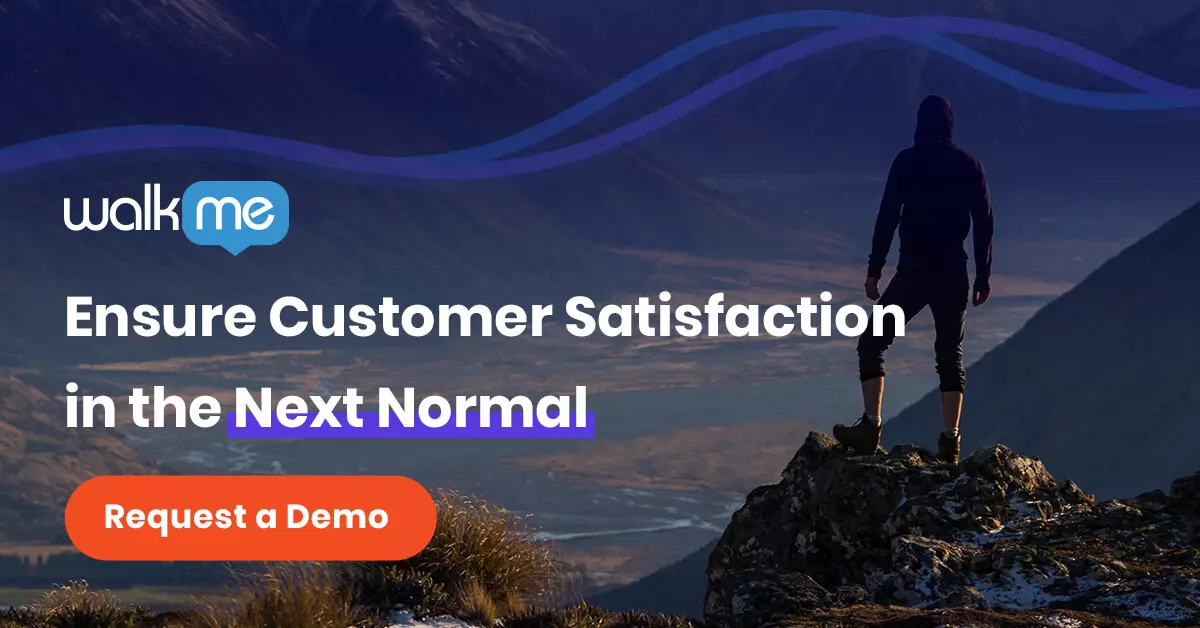Did you know that it costs five times more to acquire a new customer than to retain an existing one? By shifting the focus from customer acquisition to customer retention, mid-market companies can reduce revenue loss caused by churn.
It’s no secret how important the customer experience is to customer retention. Gartner even predicted that 81% of companies will compete mostly or entirely based on customer experience in 2019.
Read on as we delve into tips that will keep your customers coming back and reduce churn while growing your bottom line.
1. Enable user-focused onboarding
Why do some customers churn before completing even the first 30 days of a subscription? There are two common reasons:
- They don’t understand how to use your product
- They don’t see value immediately
In other words, signing up a new customer won’t work unless you can help them understand how to use your product and help them find the value you promised in just seconds – not minutes. We call this the “aha” moment when a customer discovers exactly what they were looking for in your product
To accomplish this, your CX strategy must include user-focused onboarding software that creates a personalized first-time user experience and tailors the onboarding process to their unique interests.
Research indicates that customers with a positive perception of onboarding are much less likely to churn in the first 21 days of using a new product or service. Customers are also willing to pay for an app with a positive onboarding experience.

Here are some steps to build an effective onboarding program:
- Focus onboarding guidance in-app, using simple language, and avoid directing users to outside web properties or traditional manuals.
- Offer self-service support, such as a contextual, in-app help or FAQs, that your users can turn to while setting up your product or using it for the first time.
- Use a digital adoption solution that supports user onboarding by personalizing user guidance and expediting time-to-value.
Using a digital adoption platform (DAP) makes it easy for users to quickly adapt to new features. With a more intuitive UX, active user engagement increases and retention improves.
2. Provide quick and effective support in-app and behind the scenes
By investing in sophisticated customer support software, you can enable real-time user support on your web or mobile product. Quick resolution time not only improves brand perception, creating “brand advocates”, but is also linked with higher sales.
In this day and age, consumers don’t have the patience to search through an endless FAQ to get an answer to a simple question. Quick, personalized support is crucial, with 97% of global consumers stating that customer service is important in their choice of a brand.
Trained customer service professionals are vital to the success of any business. The combination of real people and effective software makes for satisfied customers.
WalkMe DAP works two-fold by supporting customers on the front-end in real-time and empowering support professionals on the back-end to give faster service and speedier resolution.
When wind energy and hydropower company Luminus wanted to improve their customer support, they turned to WalkMe’s ActionBot. The customizable ActionBot gives immediate, chat-like answers to employee queries so that they could then effectively answer customer requests.
When Luminous reviewed their customer cancelation “save rate” without WalkMe, there was a 0% success rate. By using WalkMe, that number skyrocketed to a 70% success rate. WalkMe’s ActionBot helped agents identify mistakes within the flow of work, and raised the speed and efficiency in serving their clients. Incorporating a live-chat, chatbot or ActionBot is cited by Gartner as being a competitive advantage for any CX initiative.
To make sure your team has all the tools they need, it is crucial to conduct ongoing training for support agents using support software.
If staffing or employee bandwidth is an issue, DAP is another tool that can give 24-7 on-demand guidance to users and enhance self-service support at scale. Powered by reactive and proactive guidance and engagement, commonly asked questions are answered on the spot, and customers directed to where they need to be. By providing immediate support, tickets, and call volume can be significantly reduced, allowing support agents to focus on more high-touch matters.
3. Offer user-generated content to gain brand awareness
The marketing landscape is continually changing. Users are increasingly savvy and relying more on the opinions of their peers.
Up to 81% of people read what others have posted about those products before purchasing. Also known as user-generated content or UGC marketing, it’s a buzzword for today’s marketers.

Another way to leverage user participation is to create communities around your product or services. This is a place where users can share feedback, queries, and discuss your product or service in general. It is a golden opportunity to zero in on brand advocates that are consistent and dedicated customers. Involving them in either a community or featuring your top users on your company’s social media or blog can empower them to spread the word, and in return, generate new leads.
4. Collect data-driven customer insights
Businesses need to rely on data to make informed decisions regarding their customer experience and marketing strategies. In light of COVID-19, the vast majority of businesses have had to offer digitized offerings, placing even more of an emphasis on data-driven insights.
WalkMe Insights enables visibility into user engagement and gives actionable insights to create a better user experience. WalkMe can be used to track product or web usage, uncover points of unintended friction or confusion, measure customer satisfaction through NPS/CSAT surveys, and even identify happy or disengaged customers.
Take IBM who uses WalkMe specifically for their customer experience needs. IBM noticed that a number of its products showed a high user abandonment rate after first engaging with their products. To improve customer retention, they implemented WalkMe to centralize data and analytics and to get a better understanding of their customers’ journeys.
The results were immediate. Nilanjan (Neel) Adhya, IBM’s Chief Digital Officer shares, “WalkMe helped us improve product usage, consumption, and retention by 300%. We’ve been able to reach 80% digital offering revenue growth, which was 2X our target.”
Keep your customers happy
It is in the best interest of growing companies of all sizes to invest in CX and avoid customer churn. Technology plays a major role, and selecting the right digital tools, like a digital adoption platform, can yield positive results. With competition for customers at an all-time high, implementing the tips and software outlined can ensure your company experiences a surge in customer retention and satisfaction.


